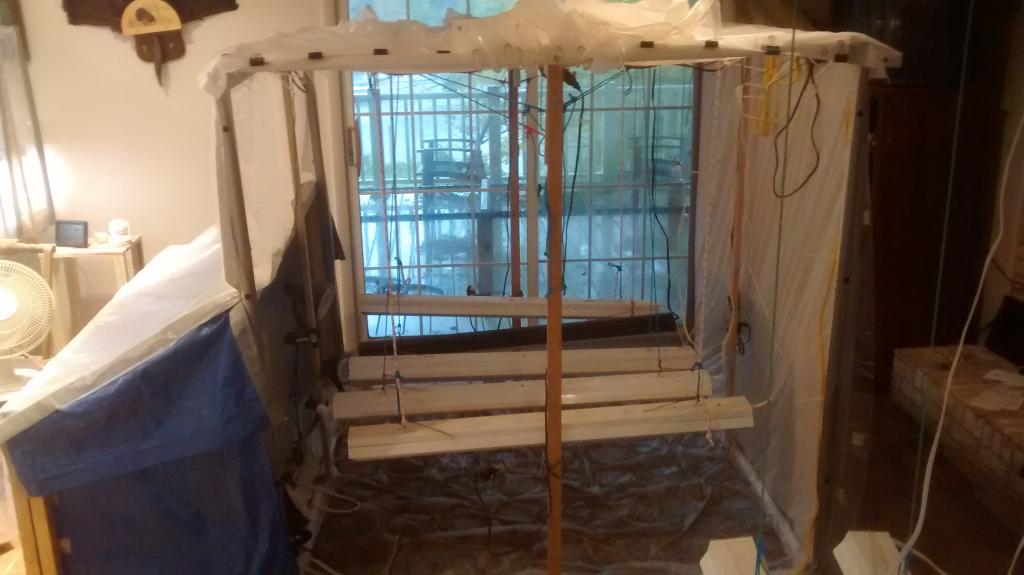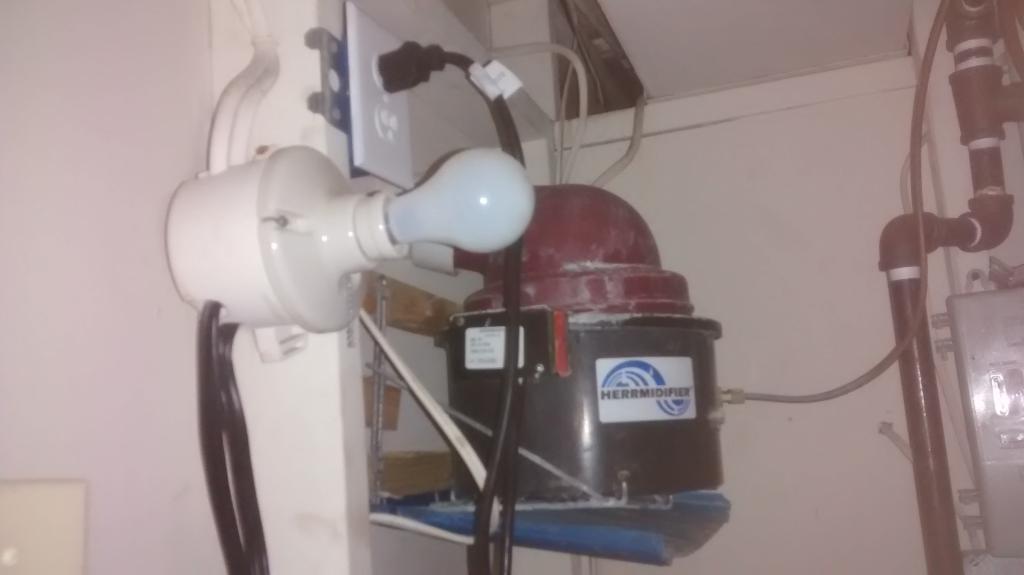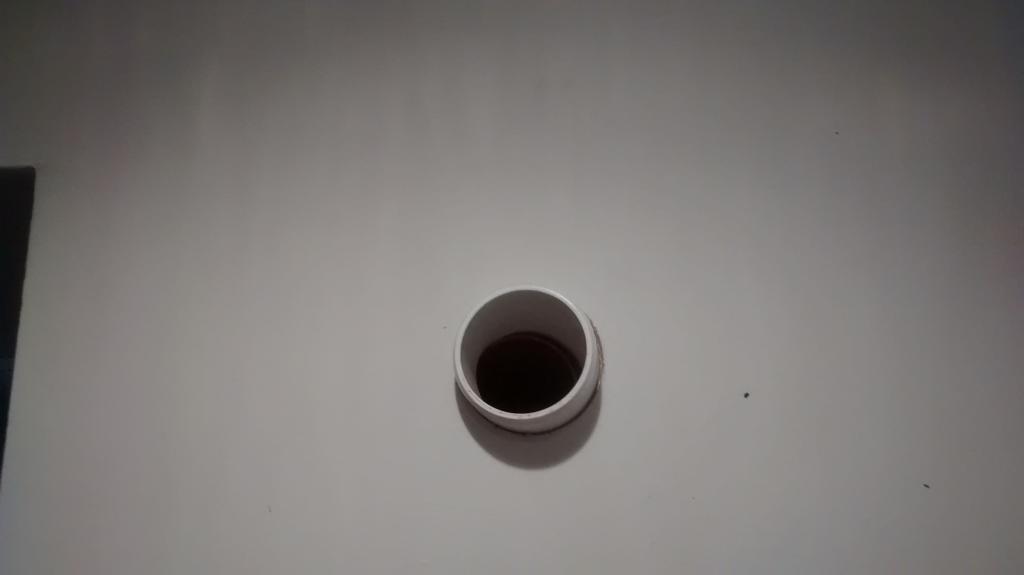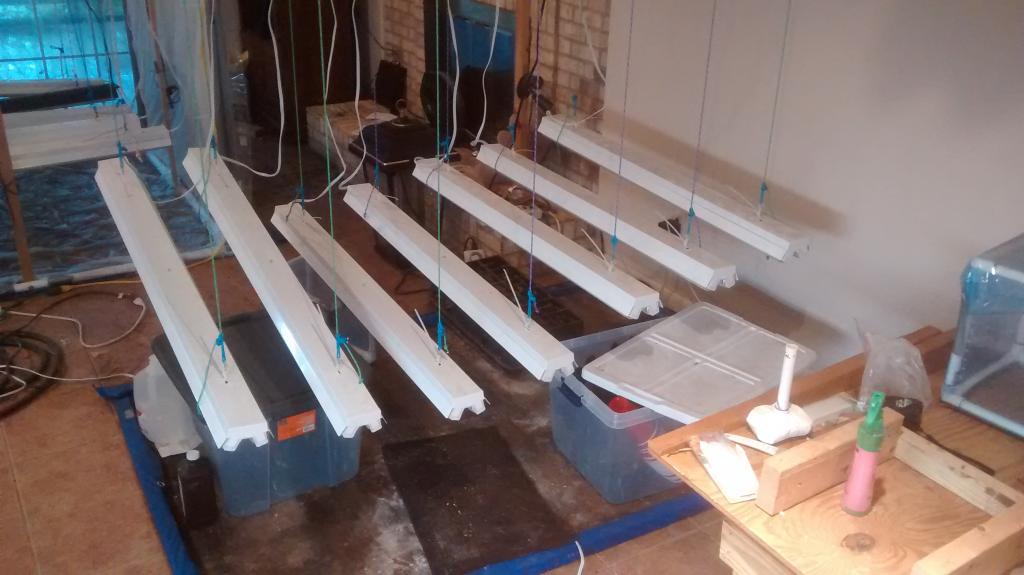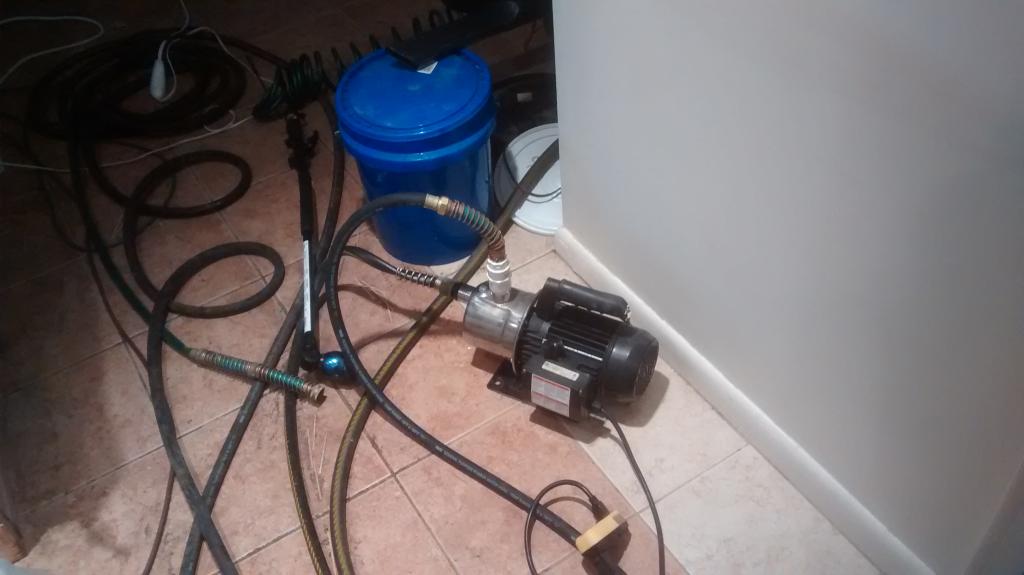yoderjac
5 year old buck +
It is getting to be the time of year when new folks are starting to ask about constructing indoor greenhouses to start trees from nuts and seeds over the winter. I thought I'd start a new thread for the topic. The general concept is simple. We cold stratify any nuts or seeds that require it and then we germinate them over the winter and get them started under lights in containers. Once the last chance of frost passes, we acclimate the seedlings to the outdoors. From there, we can either plant them in the field or keep them in containers for the summer and plant them when they go dormant, or even keep them in containers for a second year.
The first issue to address is the containers. The problem with growing trees in containers is that most trees put a lot of energy into developing a tap root. This helps ensure the trees survival in nature if it encounters surface drought. The long tap root allows at least some access to the water table. In order to improve this chance of survival the tree sacrifices potential growth.
When we grow trees in containers, this tap root, and eventually other roots become a problem. When they hit the sides of a smooth sided container, they tend to either circle or J-hook. You can end up with a plant with a long twisted tap root. Roots are designed to avoid objects like rocks and in a container, they just keep growing trying to go around the object. While the tree may look find and grow when it is young, root circling and j-hooking can become a significant problem in the later life of the tree. Some folks resolve this by trying to use large containers to start and then pruning the roots by hand before planting. This may salvage the tree but a lot of growth is lost by expending energy on growing roots that are lost. Then more growth is lost as the tree tries to recover from transplant shock in the field.
The best solution I've found to this is root pruning container systems. There are a number of these on the market. The one I use and like best is rootmaker. So, my indoor growing setup is based around these. There are several kinds of root pruning containers. Good air pruning containers are designed with irregular shaped sides that force roots to grow to an opening in the side or bottom of the container. When a root tip (regardless of size) hits air, it desiccates and terminates the root. This forces root branching. Root trapping bags are lined with a fabric that captures the tiny root ends as they grow. This has the same effect of terminating the root and causing root branching. In my experience, these don't work well with large tap roots. They are generally used after the tap root has been air pruned in a smaller container. The third kind of root pruning container works through root constriction. This type is generally used outdoors in the soil, not indoors. It allows small roots to grow through them but then constricts the root as it grows in girth. This constriction again causes root branching.
One last word on root pruning containers. It is the tiny root tips that extract most of the water an nutrients. Since the tap root is pruned early in a good root pruning system, root branching starts very early. Instead of energy going into a long tap root, it goes in to root branching which collects much more water an nutrients (provided you make them available) which in turn makes more top growth. The key is that there needs to be water and nutrition available where the root systems is located. So, if you are in a drought prone area with a deep water table, if you can't provide supplemental water until your trees are well established, you may be better off direct seeding in spring or fall depending on the tree type.
On to enclosures. The purpose of an enclosure is to try to hold the heat and humidity at good levels to maximize growth. My first enclosure is shown in this picture:

It is constructed from a simple wooden frame and shower curtains. The front is open in the picture but the shower curtain sitting on top folds down and Velcro is used to keep it fairly tight. It is designed to hold 4 rootmaker 18 express trays. Notice they are sitting on wire shelving material I got from Lowes. This elevates them an inch or so with good air flow below. They are sitting in another small frame (this one is PVC) with a shower curtain as a bottom. This "tray" collects water that runs through the cells when they are watered. I find it is better drench the cells so water is dripping out of all the holes. They are so well drained using a good mix like Promix or Fafard, you can't water them too much...just too often. I also place a small mosquito ring in the tray so any standing water does not invite insects. Also not the frame is large enough to accommodate a small fan, single room humidifier, and oil filled electric heater. I also got a remote weather monitor. I hang the remote inside the frame so I can monitor the temperature and humidity inside the unit from my living quarters upstairs.
I used inexpensive florescent shop lights with a variety of inexpensive bulbs. The amount of light is much more important than the color of light. Remember, you will only have these trees indoors for a very short portion of their lives. They will get full spectrum light as soon as spring comes. The amount of light output is expressed in lumens, but there is more too it. Many non-fluorescent grow lights are expensive and put out a lot of heat. The light energy available to the plant decreases with the distance from the source squared. If you buy a hot bulb, you have to place it further from the plant or you can get leaf burn and wilt. So, a light putting out more lumens but places further from the tree may make less light energy available to the tree than a lower lumen bulb that is cooler and can be placed closer. This is why I like fluorescents. The key is having a system that allows you to adjust the height of the lights.
Notice in the picture above, my first indoor greenhouse, I only have 3 shop light (2 bulbs each). They are hung with the chains that came with them. Since this greenhouse is only two express trays deep, I can easily reach to the back to adjust the lights....
The first issue to address is the containers. The problem with growing trees in containers is that most trees put a lot of energy into developing a tap root. This helps ensure the trees survival in nature if it encounters surface drought. The long tap root allows at least some access to the water table. In order to improve this chance of survival the tree sacrifices potential growth.
When we grow trees in containers, this tap root, and eventually other roots become a problem. When they hit the sides of a smooth sided container, they tend to either circle or J-hook. You can end up with a plant with a long twisted tap root. Roots are designed to avoid objects like rocks and in a container, they just keep growing trying to go around the object. While the tree may look find and grow when it is young, root circling and j-hooking can become a significant problem in the later life of the tree. Some folks resolve this by trying to use large containers to start and then pruning the roots by hand before planting. This may salvage the tree but a lot of growth is lost by expending energy on growing roots that are lost. Then more growth is lost as the tree tries to recover from transplant shock in the field.
The best solution I've found to this is root pruning container systems. There are a number of these on the market. The one I use and like best is rootmaker. So, my indoor growing setup is based around these. There are several kinds of root pruning containers. Good air pruning containers are designed with irregular shaped sides that force roots to grow to an opening in the side or bottom of the container. When a root tip (regardless of size) hits air, it desiccates and terminates the root. This forces root branching. Root trapping bags are lined with a fabric that captures the tiny root ends as they grow. This has the same effect of terminating the root and causing root branching. In my experience, these don't work well with large tap roots. They are generally used after the tap root has been air pruned in a smaller container. The third kind of root pruning container works through root constriction. This type is generally used outdoors in the soil, not indoors. It allows small roots to grow through them but then constricts the root as it grows in girth. This constriction again causes root branching.
One last word on root pruning containers. It is the tiny root tips that extract most of the water an nutrients. Since the tap root is pruned early in a good root pruning system, root branching starts very early. Instead of energy going into a long tap root, it goes in to root branching which collects much more water an nutrients (provided you make them available) which in turn makes more top growth. The key is that there needs to be water and nutrition available where the root systems is located. So, if you are in a drought prone area with a deep water table, if you can't provide supplemental water until your trees are well established, you may be better off direct seeding in spring or fall depending on the tree type.
On to enclosures. The purpose of an enclosure is to try to hold the heat and humidity at good levels to maximize growth. My first enclosure is shown in this picture:

It is constructed from a simple wooden frame and shower curtains. The front is open in the picture but the shower curtain sitting on top folds down and Velcro is used to keep it fairly tight. It is designed to hold 4 rootmaker 18 express trays. Notice they are sitting on wire shelving material I got from Lowes. This elevates them an inch or so with good air flow below. They are sitting in another small frame (this one is PVC) with a shower curtain as a bottom. This "tray" collects water that runs through the cells when they are watered. I find it is better drench the cells so water is dripping out of all the holes. They are so well drained using a good mix like Promix or Fafard, you can't water them too much...just too often. I also place a small mosquito ring in the tray so any standing water does not invite insects. Also not the frame is large enough to accommodate a small fan, single room humidifier, and oil filled electric heater. I also got a remote weather monitor. I hang the remote inside the frame so I can monitor the temperature and humidity inside the unit from my living quarters upstairs.
I used inexpensive florescent shop lights with a variety of inexpensive bulbs. The amount of light is much more important than the color of light. Remember, you will only have these trees indoors for a very short portion of their lives. They will get full spectrum light as soon as spring comes. The amount of light output is expressed in lumens, but there is more too it. Many non-fluorescent grow lights are expensive and put out a lot of heat. The light energy available to the plant decreases with the distance from the source squared. If you buy a hot bulb, you have to place it further from the plant or you can get leaf burn and wilt. So, a light putting out more lumens but places further from the tree may make less light energy available to the tree than a lower lumen bulb that is cooler and can be placed closer. This is why I like fluorescents. The key is having a system that allows you to adjust the height of the lights.
Notice in the picture above, my first indoor greenhouse, I only have 3 shop light (2 bulbs each). They are hung with the chains that came with them. Since this greenhouse is only two express trays deep, I can easily reach to the back to adjust the lights....
Last edited:

